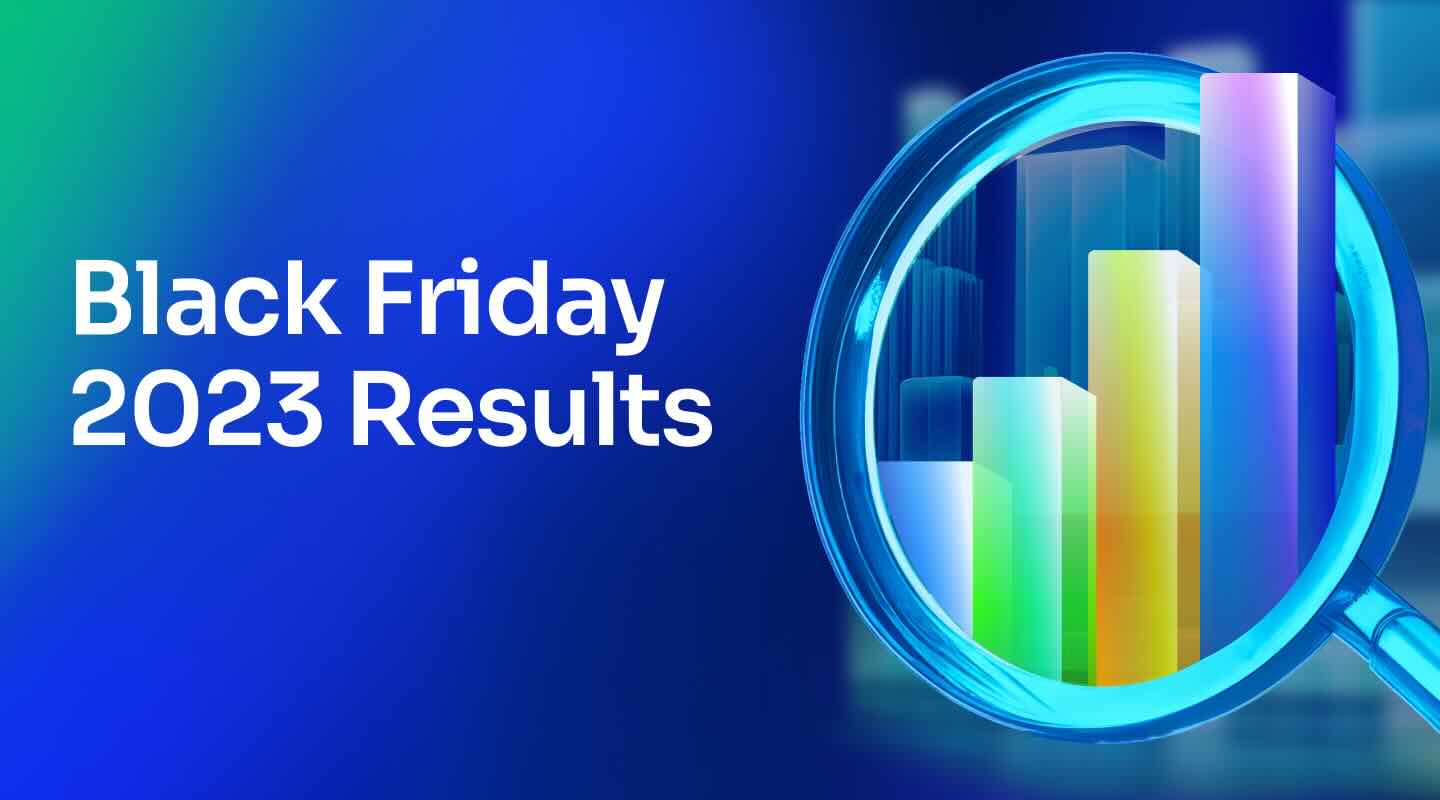Add InstantSearch and Autocomplete to your search experience in just 5 minutes
A good starting point for building a comprehensive search experience is a straightforward app template. When crafting your application’s ...
Senior Product Manager

A good starting point for building a comprehensive search experience is a straightforward app template. When crafting your application’s ...
Senior Product Manager

The inviting ecommerce website template that balances bright colors with plenty of white space. The stylized fonts for the headers ...
Search and Discovery writer

Imagine an online shopping experience designed to reflect your unique consumer needs and preferences — a digital world shaped completely around ...
Senior Digital Marketing Manager, SEO

Winter is here for those in the northern hemisphere, with thoughts drifting toward cozy blankets and mulled wine. But before ...
Sr. Developer Relations Engineer

What if there were a way to persuade shoppers who find your ecommerce site, ultimately making it to a product ...
Senior Digital Marketing Manager, SEO

This year a bunch of our engineers from our Sydney office attended GopherCon AU at University of Technology, Sydney, in ...
David Howden &
James Kozianski

Second only to personalization, conversational commerce has been a hot topic of conversation (pun intended) amongst retailers for the better ...
Principal, Klein4Retail

Algolia’s Recommend complements site search and discovery. As customers browse or search your site, dynamic recommendations encourage customers to ...
Frontend Engineer

Winter is coming, along with a bunch of houseguests. You want to replace your battered old sofa — after all, the ...
Search and Discovery writer

Search is a very complex problem Search is a complex problem that is hard to customize to a particular use ...
Co-founder & former CTO at Algolia

2%. That’s the average conversion rate for an online store. Unless you’re performing at Amazon’s promoted products ...
Senior Digital Marketing Manager, SEO

What’s a vector database? And how different is it than a regular-old traditional relational database? If you’re ...
Search and Discovery writer

How do you measure the success of a new feature? How do you test the impact? There are different ways ...
Senior Software Engineer

Algolia's advanced search capabilities pair seamlessly with iOS or Android Apps when using FlutterFlow. App development and search design ...
Sr. Developer Relations Engineer

In the midst of the Black Friday shopping frenzy, Algolia soared to new heights, setting new records and delivering an ...
Chief Executive Officer and Board Member at Algolia

When was your last online shopping trip, and how did it go? For consumers, it’s becoming arguably tougher to ...
Senior Digital Marketing Manager, SEO

Have you put your blood, sweat, and tears into perfecting your online store, only to see your conversion rates stuck ...
Senior Digital Marketing Manager, SEO

“Hello, how can I help you today?” This has to be the most tired, but nevertheless tried-and-true ...
Search and Discovery writer
Imagine you’re going on vacation.
You first need a pair of cool new sunglasses, so you check Amazon for the hottest styles and best price.
You then go to the AirBnB website to find a short-term rental, and, finally, consult the dynamic-pricing engine KAYAK to look at ticket prices and book the cheapest airline tickets.
When it’s time to get going, you conveniently book a ride from Uber or Lyft on your mobile phone.
All well and good. Except for one thing: did you know that all of these companies use dynamic pricing — variable prices based on a variety of factors aiming to determine how much the shopper is willing to pay — in order to maximize their profits?
The upshot: thanks to data science, because of the way dynamic pricing works, a friend could buy the exact-same pair of cool sunglasses, book the exact same vacation rental and flight, and jump in the exact-same ride-service driver’s car but pay wildly different data-driven pricing than you for all of them.
Like possibly wildly different.
For instance, if you have to book your airport lift during time-based “surge pricing” time to make your rush-hour-departure flight while they can go leisurely in the middle of the night for an early-morning red-eye, you could be subject to price discrimination and out considerably more cash as the result of changing prices.
So before you buy products and book services, it could pay to know the best days and times of day to buy all of them to avoid price increases.
Maybe you’ve heard about this dynamic pricing software phenomenon but haven’t noticed it hitting you in the pocketbook just yet; after all, how would you easily know it’s happening? It’s not like companies go out of their way to advertise their machine-learning price optimization secrets or broadcast how much extra money you’re unwittingly parting with because of their changing product price changes (though they could more conceivably point out when you’re saving money). You could do the research, or compare notes with friends about their shopping, and maybe catch a company’s dynamic pricing strategy in action.
Regardless, it’s going on right in front of your eyes on many retail websites (e.g., Target and Alibaba). Did you know that if you frequent a website such as Amazon, the prices you see will be higher than if you’re a newbie stepping through their virtual doors? It’s true: customers’ loyalty levels are calculated and applied to optimize the pricing they’re shown.
Ecommerce: dynamic pricing’s best partner
If you’re a retailer, the concept of dynamic pricing is an understandably different ball game, and one you can definitely win if you do things right.
Why is it so promising? This functionality is based on what’s happening with supply and market demand of products or services in real time. That’s something truly complex that most ecommerce sites aren’t able to monitor effectively. When you implement dynamic pricing, it closely tracks real-time pricing in the marketplace as it goes up and down and keeps an eye on what your competitors are up to with their pricing. That means you can easily identify and respond to market conditions with your optimal pricing.
While some physical retail stores have installed mini electronic monitors that show dynamic prices for their SKUs, ecommerce stores are the predominant use case, as the Internet and Big Data have made it supremely easy for online retailers to put dynamic pricing into practice for virtually any product.
In real time, sellers can analyze competitors’ prices, predicted demand and actual demand, how the weather, events, and other external factors could figure in, and operating costs.
Here are some of the advantages of putting dynamic pricing technology to work on an ecommerce platform:
With dynamic pricing, some companies might worry that a robot is taking over and will run amok. That would be misguided. As is the case in most Web-related situations, in order to optimize prices, knowledge is power. Of course it’s key to be able to know your pricing data inside and out — the supply and demand and real-time fluctuations and market trends for the price points of your items or services. Then, thanks to your dynamic pricing tools, you can then confidently price right for your highest revenue. That’s not to say that the algorithms are foolproof; you can still make changes as you see fit and sign off on the pricing recommendations.
For ecommerce retailers, with flat pricing, it can be really tough (impossible?) to know where to draw the line on prices to stay as profitable as you’d like. When you use a dynamic pricing model to determine exactly how low or high you can realistically go based on market data, you can basically guarantee that you won’t lose money. And definitively knowing your limits then lets you be a little relaxed and flexible in how you operate price wise, such as how crazy you can get with home-page promotions or flash sales. All in all, that’s good for promoting your brand.
Bye-bye old-style, time-consuming pricing calculations and administrative overhead. When you move from set prices to dynamic pricing, you can’t help but streamline your operations. When you automate your dynamic pricing, the impact is all the more palpable.
The whole point of dynamic pricing is choosing the right price for the business that’s also not too high for the consumer. With a dynamic pricing solution, you use algorithms to improve your correct-pricing-decision rate. You’re able to increase prices on more in-demand products. You can also use it to tell you when to lower prices when needed to help get rid of inventory. Artificial intelligence is invaluable for these types of price adjustments. If you can accurately and consistently hit that pricing sweet spot, your profit goes up.
More sales, better profits, higher conversion rates, stronger success. How much better? The average increase in profit margins from using dynamic pricing is 10%. However, according to Forrester, companies can boost their profits by as much as 25% by using dynamic pricing. No wonder dynamic pricing seems to be in use on virtually every successful large online retailer’s site.
Satisfying your shoppers has to figure into any strategy you set up. How much are people willing to pay for your products? Dynamic pricing gives you the market data. For instance, how price sensitive are your shoppers? You can determine each customer’s demand curve — the highest and lowest prices shoppers will shell out. In addition, these types of insights can help you create better personalization for your shoppers.
Dynamic pricing is a popular tool in the ecommerce world. It’s also just one aspect of creating a successful retail website with competitive prices and a winning customer experience.
While you think about your business needs and whether to implement different types of dynamic pricing or invest in price optimization software, consider upgrading your search technology to improve your user experience along with that endeavor. You could get your toes wet in terms of maximizing pricing by using Algolia search and discovery tools to set pricing rules based on customers’ behavior (e.g., their buying history or what they view frequently). You can use rules or clever indexing, or find your own coding solutions. You could try that, as well as explore setting up dynamic inventory.
Regardless of where your decision making leads you with your ecommerce pricing, you have some great choices on ways to use state-of-the-art price management to take your ecommerce business up a notch and exceed your business goals. We hope you’ll get in touch soon and check out what our search API has to offer.
Powered by Algolia Recommend